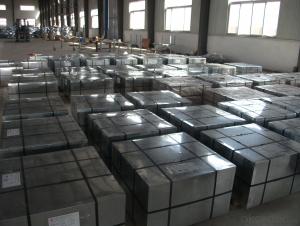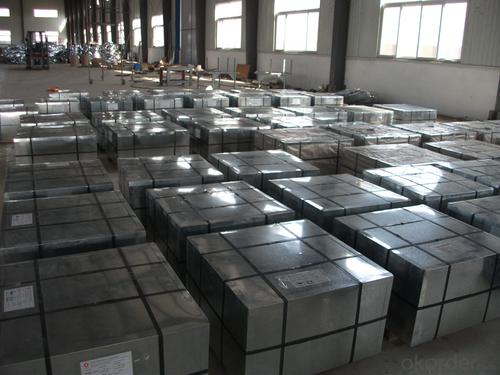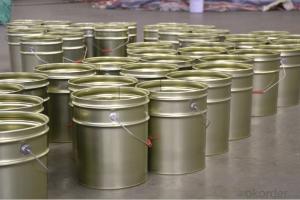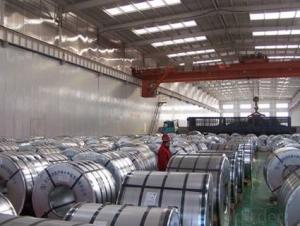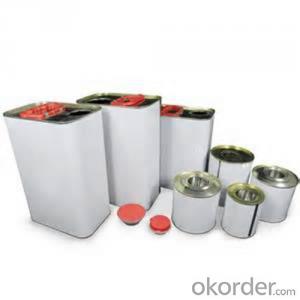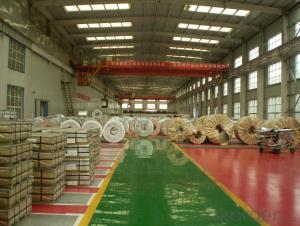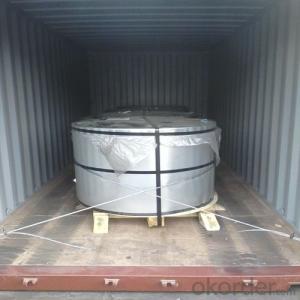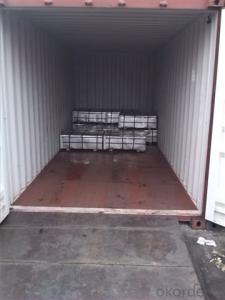ETP for Metal Package of Industrial or Chemical Useage
- Loading Port:
- Shanghai
- Payment Terms:
- TT OR LC
- Min Order Qty:
- 25 m.t.
- Supply Capability:
- 30000 m.t./month
OKorder Service Pledge
OKorder Financial Service
You Might Also Like
Specification
1.Structure of ETP for Metal Package of Industrial or Chemical Useage Description
Electrolytic Tinplate undoubtedly enjoys the pride of place as a packaging medium especially for food. It owes its unique position to its "nine layer sandwich structure", each of which contributes to its eminence as a packing material. The steel base of electrolytic tinplate provides the necessary strength and formability for can fabrication. The tin-iron alloy layer provides the bond between the steel and free tin layer. The free tin layer is not only responsible for the attractive bright finish and ease of solderability but is also non-toxic- a factor of vital importance in food packaging!
2.Main Features of the ETP for Metal Package of Industrial or Chemical Useage
Tinplate’s corrosion resistance, light weight and malleability make it ideal for many precision end uses, including food packaging and consumer products. The special properties of tinplate and improved manufacturing technology is allowing for the utilization of tinplate in many new end products.
3.ETP for Metal Package of Industrial or Chemical Useage Images
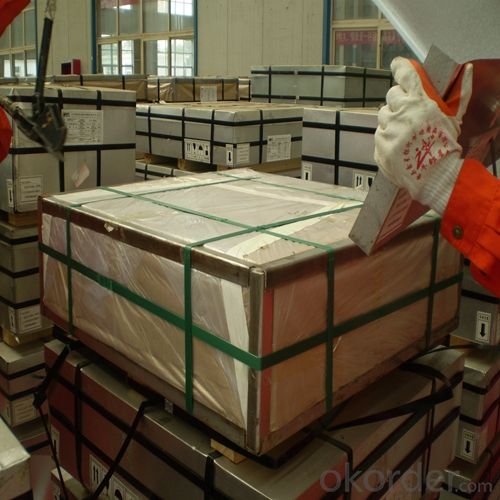
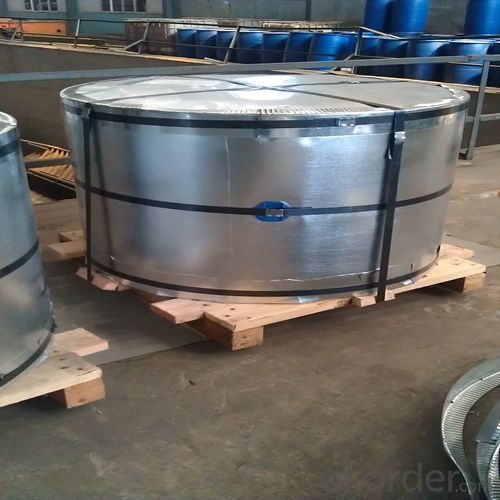
4.ETP for Metal Package of Industrial or Chemical Useage Specification
Specification of :
Standard: ISO 11949 -1995, GB/T2520-2000,JIS G3303,ASTM A623, BS EN 10202
Material: MR,SPCC
Thickness:0.15mm - 0.50mm
Width: 600mm -1150mm
Temper: T1-T5
Annealing: BA & CA
Coil Inner Diameter: 508mm
Weight: 6-10 tons/coil 1~1.7 tons/sheets bundle
Passivation:311
Oil: DOS
Surface: Finish,bright,stone,matte,silver
5.FAQ of ETP for Metal Package of Industrial or Chemical Useage
- What is tinning and how does it work?
Tinning is the process of thinly coating sheets of wrought iron or steel with tin, and the resulting product is known as tinplate. It is most often used to prevent rust.
- Do you only have prime quality tinplate?
We can supply both prime and second quality tinplate.
- Q: How is tinplate coated with polymer films?
- Tinplate is coated with polymer films through a process called lamination. This involves applying a layer of polymer film onto the surface of the tinplate using heat and pressure. The polymer film adheres to the tinplate, providing a protective barrier against corrosion and enhancing its durability.
- Q: How does tinplate perform in microwave ovens?
- Tinplate is not suitable for use in microwave ovens as it can cause sparks and potentially damage the oven.
- Q: How is tinplate used in the construction industry?
- Tinplate is commonly used in the construction industry for various applications. It is often utilized for roofing materials, such as tinplate shingles or metal roof panels, due to its durability, weather resistance, and corrosion protection. Additionally, tinplate is used for cladding or siding purposes, providing an aesthetically pleasing and long-lasting exterior finish for buildings. Its versatility also extends to ductwork, where tinplate is used to fabricate air conditioning and ventilation systems. Overall, tinplate's strength, flexibility, and protective properties make it a valuable material in the construction sector.
- Q: What are the different types of tinplate containers available?
- There are several different types of tinplate containers available, including cans, tins, boxes, and drums. These containers can vary in size, shape, and functionality, and are commonly used for packaging food, beverages, chemicals, and other products.
- Q: What are the considerations for handling and storing tinplate coils?
- There are several considerations for handling and storing tinplate coils. Firstly, it is important to handle the coils with care to prevent any damage or deformation. This includes using appropriate lifting equipment, avoiding dropping or dragging the coils, and ensuring a smooth and controlled transfer process. Secondly, the storage environment should be suitable for tinplate coils. They should be stored in a clean, dry, and well-ventilated area to prevent corrosion and rusting. It is recommended to keep the coils away from direct sunlight, extreme temperatures, and moisture. Additionally, proper stacking and organization of the coils is crucial. They should be stacked on flat and stable surfaces, with adequate support and spacing between each coil. Labeling the coils with relevant information such as date of manufacture, size, and grade can aid in efficient inventory management. Lastly, regular inspections should be conducted to identify any potential issues or defects. This includes checking for any signs of corrosion, dents, or scratches that may have occurred during handling or storage. Prompt action should be taken to address any problems to ensure the quality and integrity of the tinplate coils.
- Q: What are the advantages of using tinplate for gift packaging?
- Tinplate offers numerous advantages for gift packaging. Firstly, it is highly durable and provides excellent protection for the contents, ensuring that the gift remains intact and undamaged. Additionally, tinplate is lightweight, making it easy to handle and transport. It is also resistant to corrosion and can withstand various environmental conditions, ensuring the longevity of the packaging. Furthermore, tinplate can be easily customized and decorated, allowing for unique and visually appealing gift packaging designs. Lastly, tinplate is recyclable, making it an environmentally friendly option for gift packaging.
- Q: What are the different tinplate finishes available?
- There are several different tinplate finishes available, including bright, stone, matte, and lacquered. These finishes offer varying levels of shine, texture, and protection to the tinplate surface.
- Q: How is tinplate used in the beverage industry?
- Tinplate is commonly used in the beverage industry for packaging cans due to its ability to provide a protective barrier against corrosion and maintain the flavor and quality of the beverages.
- Q: Can tinplate packaging be used for stationery products?
- Yes, tinplate packaging can be used for stationery products. Tinplate is a durable and versatile material that provides protection and aesthetic appeal, making it suitable for packaging various stationery items like pens, pencils, erasers, or paper clips. Additionally, tinplate packaging can be custom designed and printed to enhance branding and create a unique look for stationery products.
- Q: How is tinplate cut and shaped for different packaging designs?
- Tinplate is cut and shaped for different packaging designs using various techniques such as shearing, blanking, and deep drawing. Shearing involves cutting the tinplate into desired sizes using a sharp blade or scissors. Blanking is a process where the tinplate is cut into a specific shape, usually using a die and a press. Deep drawing involves stretching the tinplate over a die to create a three-dimensional shape, often used for cylindrical or curved packaging designs. These techniques allow for precise and customized shaping of tinplate to meet different packaging requirements.
Send your message to us
ETP for Metal Package of Industrial or Chemical Useage
- Loading Port:
- Shanghai
- Payment Terms:
- TT OR LC
- Min Order Qty:
- 25 m.t.
- Supply Capability:
- 30000 m.t./month
OKorder Service Pledge
OKorder Financial Service
Similar products
Hot products
Hot Searches
Related keywords
